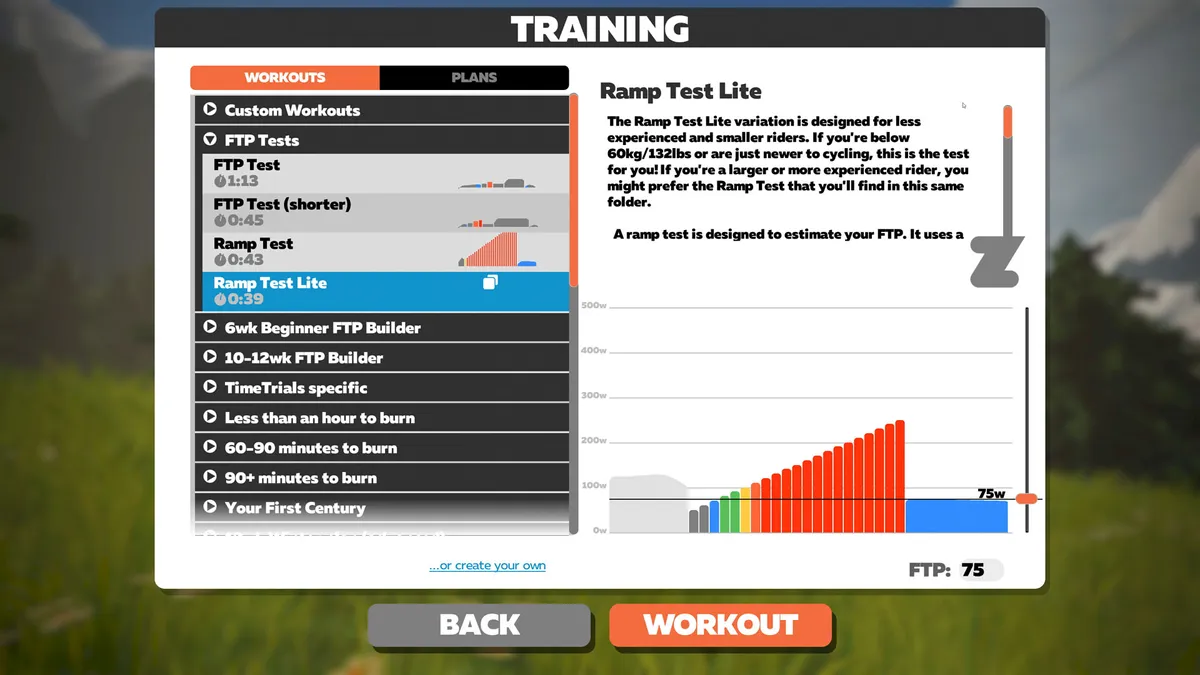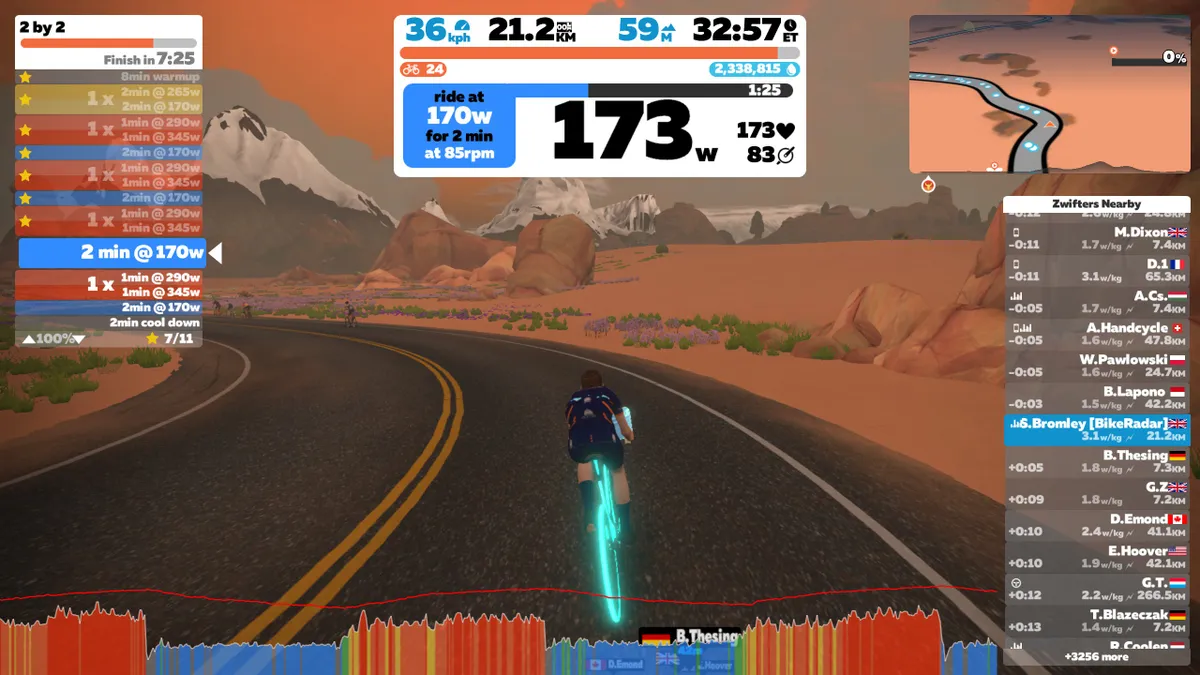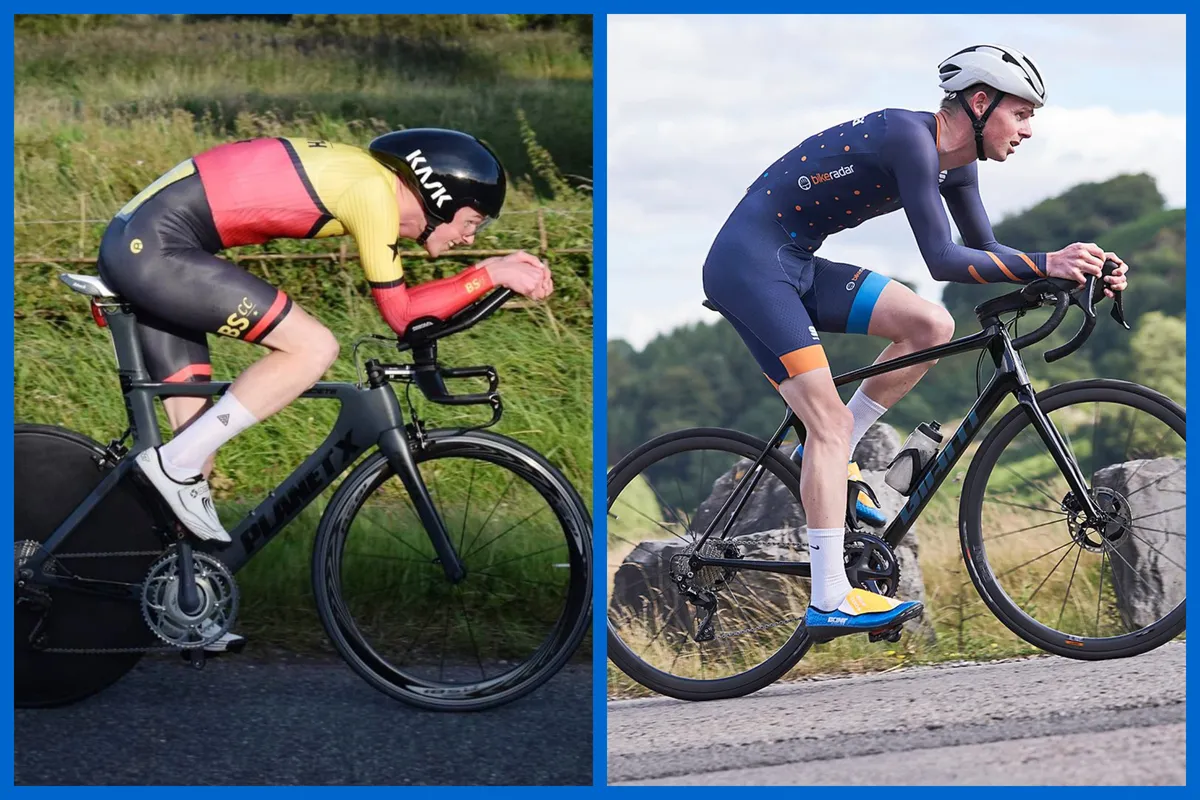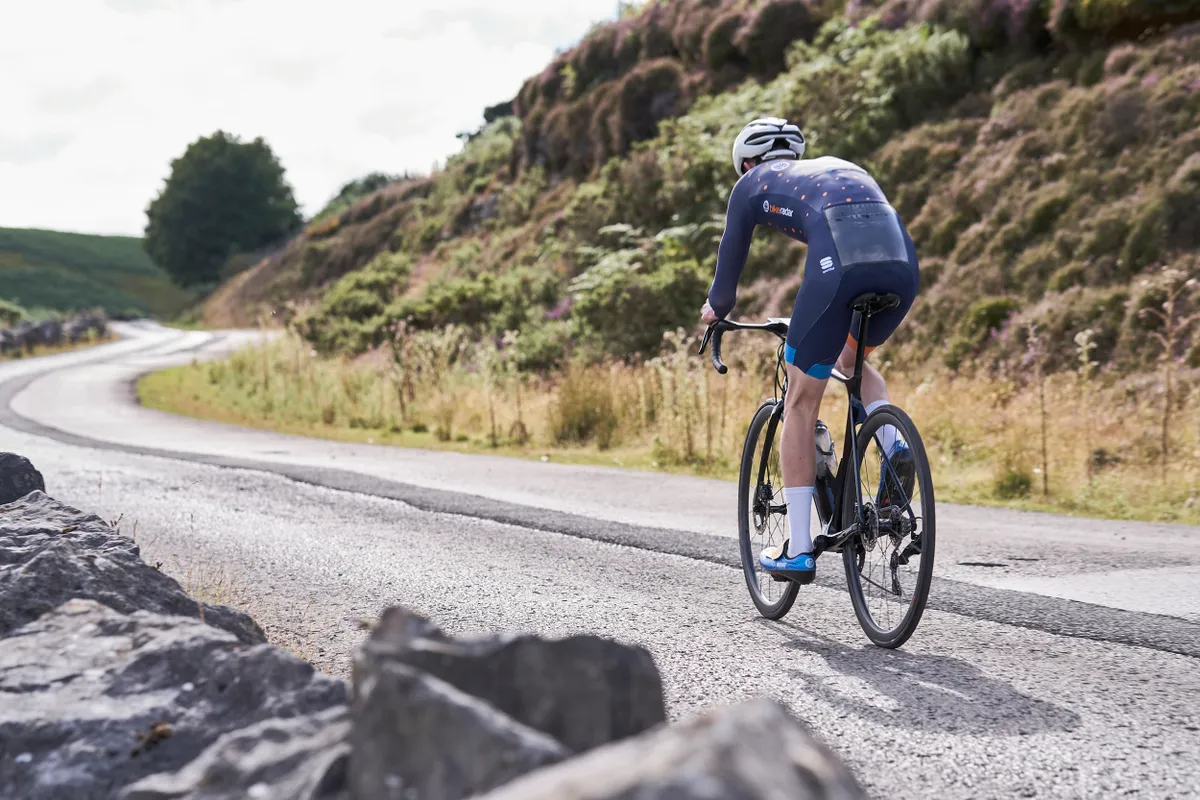While we might miss out on the winter club run, us delicate souls who prefer the comfort and convenience of indoor cycling over the cold, damp and dark of winter cycling, still like to bicker.
Dumb versus smart trainer (smart trainer). Indoor cycling app versus Netflix (Zwift). Virtual racing and group rides versus carefully constructed training plan (hastily constructed training plan, subject to change at any moment).
However, one thing that doesn’t divide opinion enough is ERG mode versus simulation mode.
Anyone who's ever fallen into an ERG mode ‘spiral of death’, will know the anguish of failing to keep up with the required cadence and power output.
But I think there are other, more important reasons to abandon our robot overlords and take back control of our power output.
In fact, I want to make the case that ERG mode is overrated.
What is ERG mode?
Before we go any further, it’s worth explaining what ERG mode is.
ERG mode is an optional setting used by smart trainers and smart indoor bikes. It automatically adjusts the resistance to match your cadence, in order to hold you at a prescribed power output during a workout.
In contrast, simulation mode is where the trainer or indoor bike replicates the demands of a virtual course, or simulates a gradient (or resistance level) set manually by you, either using an indoor cycling app or a bike computer.

Convenience isn’t always a good thing
On paper, ERG mode seems like a pretty convenient thing, and in reality it often can be.
Rather than needing to use your gears to adjust the resistance, you just let the trainer do it for you and focus on maintaining your cadence.
You don’t need to worry about pacing, either, because the trainer will simply lower the resistance if you start an interval too hard (and vice versa).

However, as with many things, what’s convenient isn’t always what’s best.
Whether you’re training for racing, sportives, or just aiming to get fitter and faster in general, learning how to pace efforts, and how to use your gears to adjust your cadence, are vital skills.
If you’re looking to race time trials or hill climbs, then this is even more important because being able to judge evenly paced efforts is critical to achieving your best performance.
Inertia
In smart trainer reviews, we often talk about the inertia – the feeling of momentum produced by energy stored in the trainer's flywheel – but a crucial aspect that’s often overlooked is how the level of inertia changes in accordance with flywheel speed, and how this affects the way we ride.
For example, when the trainer is simulating climbs, flywheel speed is relatively low. In turn, this gives a feeling of lower inertia, with less momentum than on a flat road.
In contrast, when the trainer is simulating flat roads, flywheel speed tends to be relatively high (especially when you’re riding hard or in a fast virtual group), producing a feeling of high inertia and momentum.

When riding in ERG mode, though, we typically stay in a single, usually low, gear (more on this later). This inevitably leads to us training with a specific level of inertia or momentum.
This is important because it affects the way we pedal – something we can visualise with pedalling dynamics data from some of the best power meters.
When riding fast on a time trial bike, for example, momentum is high and the power phase of my pedal stroke (i.e. the point in the rotation at which I start generating power) tends to start relatively late.

In the above image, which shows pedal stroke data from my peak one minute power during a HIIT interval training session on a smart trainer, it starts at an average of 320.65 degrees.
In contrast, when climbing virtual gradients at slow speeds on my road bike, momentum is low, meaning I need to kick over the top dead centre more forcefully to maintain it. As a result, the power phase of my pedal stroke tends to begin much earlier.

In the above image, taken from a race effort up the Epic KOM Reserve in Zwift, the power phase of pedal stroke (during peak one minute power, as before) starts at an average of 291.27 degrees – almost 30 degrees earlier than on the time trial bike.
I’m not a qualified sports scientist, but I am convinced there’s a big enough difference between those two pedalling styles that means training in one way wouldn’t be the ideal preparation for racing in the other.
Most riders, of course, will be best served by a broad range of training rides and styles – if just to help keep things fun and interesting – but if you have specific goals then I believe this is something you should take into consideration.
Why can’t I just use ERG mode in whatever gear I like?

At this point, you might be asking why you can’t just use ERG mode in any gear you choose, in order to produce the desired momentum for your training.
The issue is that most smart trainer brands typically recommend putting your bike in a low gear for ERG mode workouts, specifically in order to keep the flywheel speed low.
Wahoo, for example, recommends “using the small chainring in the front, and the middle of the cassette at the back” when using ERG mode with the Wahoo Kickr V6, Kickr Core and Kickr Bike.
This is because smart trainers determine the resistance to apply in ERG mode in relation to how fast the flywheel is spinning (which is directly correlated with your power output and gear selection).When the flywheel is spinning faster, a smart trainer has a more difficult task adjusting the level of resistance because it must apply relatively larger amounts of braking force to slow the flywheel.
As a result, it’s usually more difficult to hold a consistent target power when using ERG mode in a big gear, and this can make using it a frustrating experience.
By following this gearing advice, though, we end up in a middle ground, with more inertia than when climbing in a very low gear, but not as much as when riding fast in a big gear.
Training should be specific

It’s well established we should generally look to closely replicate the conditions of whatever race, event or goal we’re training for.
Including considerations of gear selection, momentum and pedalling dynamics can be a part of this, because it helps make your training more specific and, hopefully, more effective as a result.
By using simulation mode instead of ERG mode, we can set the gradient or resistance as required, and use this in tandem with our gears to more closely replicate the demands of our goal event.
We can take it even further, though. In the real world, most climbs and roads are not steady gradients – there will almost always be some natural undulations even on a steady climb or nominally flat course.
Doing training efforts on 'real' virtual climbs or roads demands you react to the changing gradients either by adjusting your effort or by using your gears, just as you would when riding outside.
Some indoor cycling apps, such as Wahoo RGT, even enable you to upload GPX course data and replicate the changing demands of a course almost exactly, if you’re targeting a specific event.
Is ERG mode overrated?
Given the above, I think so.
Of course, if it works for you then don’t let me tell you how to ride your bike. If you enjoy using ERG mode and it helps you do more training than you otherwise would, then it’s still going to be a clear net benefit to your fitness.
But if you’ve always done your workouts in ERG mode by default, perhaps without giving it much thought, then it’s worth trying something different, especially if you’re training for something specific such as time trials or to get better at climbing.
